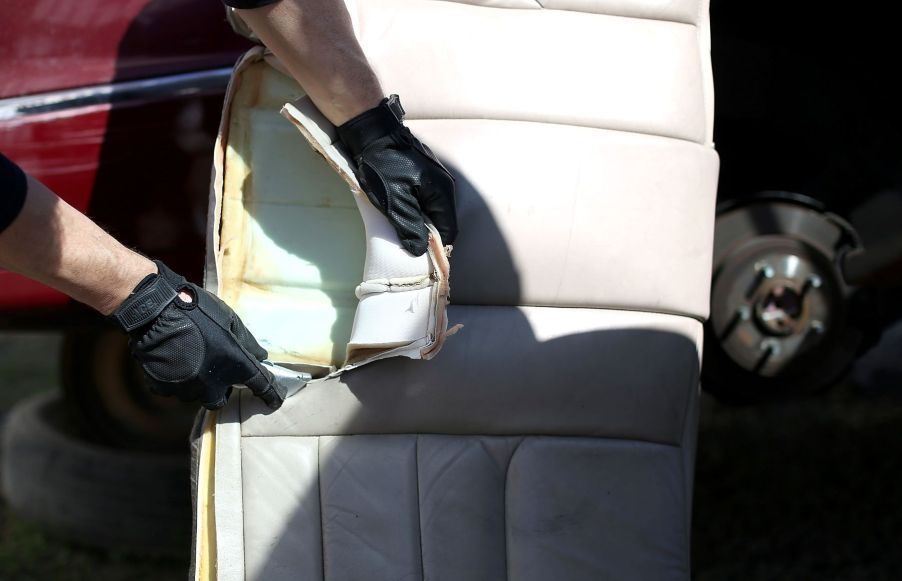
What to Look for When Choosing Who Can Reupholster Your Car
Over time, our vehicles show the wear and tear of use and age and require maintenance. Depending on the quality of the material, overexposure to the sun, or just an ill-placed tool or pointy object, you can easily find tears or cracks in your upholstery. These tears and cracks are not only an eyesore but can also decrease your car’s resale or trade-in value. Of course, it’s best to avoid tears and cracks when possible, but sometimes reupholstering your car or truck is unavoidable.
What it takes to get your seats reupholstered

Many drivers put off reupholstering their vehicle, as doing so is expensive. According to Vermont Automobile Enthusiasts, you may pay up to $800 for a vehicle upholstery kit and around another $750 for a professional to install it.
However, it’s usually best to avoid buying an off-the-shelf reupholster kit. With their experience, professional upholsterers know more than most vehicle owners about how best to refit car interiors. In fact, many owners seeking to save money on upholstery buy an off-the-shelf kit only to learn that their kit is unusable or won’t provide the desired effect. So, they wind up wasting money rather than saving it.
You may pay around $1,500 to $2,000 to install a kit that will cover the interior cloth, fabric, or leather upholstery of a vehicle, including front and back seats. The third row of seats will cost you more. Budget around $250 to $750 per seat. You’ll pay closer to the $750 price for more extensive repairs, such as fixing springs and adding foam where needed, as well as replacing the old material with new fabric or leather.
You’ll also pay more for bucket seat upholstery. If your vehicle needs two bucket seats and its backbench replaced, expect to spend up to $2,000. Of course, your costs will vary with your car specs and your preferences. Additionally, labor costs may also increase or reduce your final bill.
What to look for when evaluating upholstery shops
If you pick the wrong upholstery professional, your bill can also increase (and repair quality decrease). When looking for a shop, pay attention to online reviews to help you select a few possibilities. Ask friends of yours who are automotive enthusiasts for references.
Then, take the time to visit the shops themselves. Keep an eye out for their level of cleanliness and organization. A well-kept shop signals that the professional upholsterer will handle your car with meticulous attention to detail. Also, avoid shops that smell like smoke or that employ smokers. Otherwise, your vehicle could pick up the smell while it’s being worked on.
Additionally, take a look at some of each shop’s previous work, as well as the sample materials available. Doing so can be overwhelming if you are a beginner. If you have a friend who’s had their car worked on before, ask if they can come with you and help you evaluate your choices.
You’ll want to get a price estimate. Without spending time examining your car, they may not be able to give you a firm estimate. However, even getting a range can help you determine whether the professional is in line with market rates or trying to gouge you.
Determining whether you need an upholsterer
While a small tear in your passenger seat may be a nagging sight, it is not necessarily a reason to hire an upholsterer. In many cases, you can repair tears with a needle and thread. DIY upholstery kits can be used to repair small cracks and tears that you can purchase at an automotive shop for a fraction of the cost you’d spend hiring a professional upholsterer. Additionally, if you only have the money to hire an upholsterer or get that rattling in your engine checked out, the engine should win every time.
Of course, it’s best to keep your car in a good enough condition that you don’t need to hire an upholsterer in the first place. You can preserve the interior of your seats, starting with vacuuming them and then using a material-appropriate cleaner. You should likely also use a conditioner to keep your interior flexible and preserve it as long as possible.
Doing this regularly and keeping sharp and pointy objects off seats without protecting them first can keep your seats from tears and cracks. Furthermore, if you have leather upholstery, consider window tints, or use window shields and screens on sunny days. These tips will help you avoid shelling out hundreds or thousands of dollars for vehicle upholstery.


